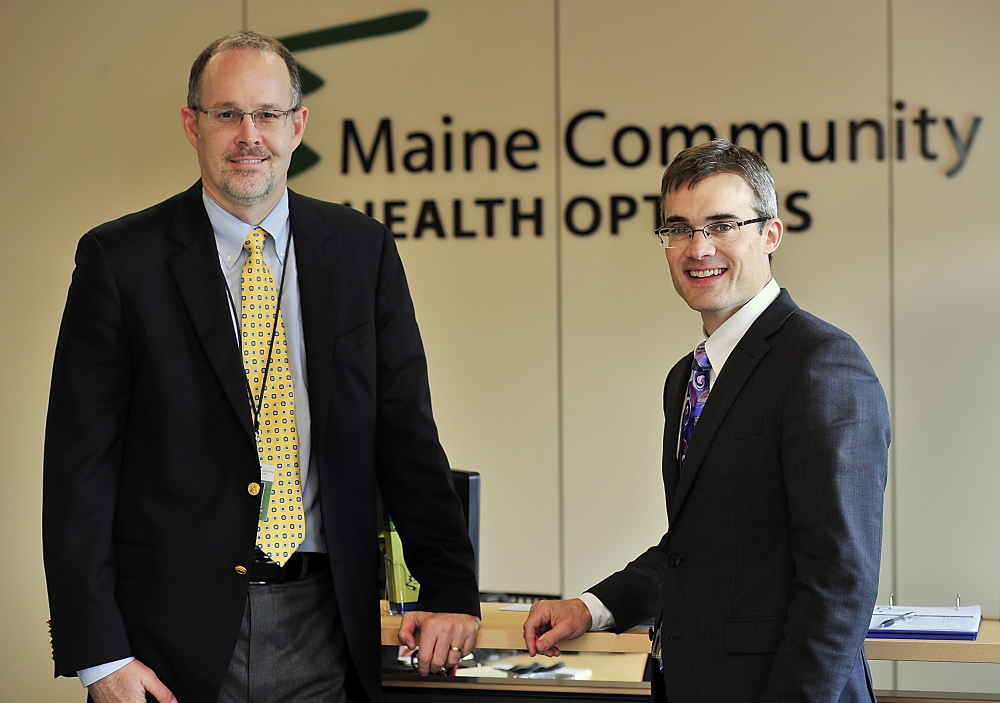Community Health Options, the Maine-based health insurance cooperative, drew down more than $8 million from reserves to cover losses during the first three months of the year, but that’s a smaller withdrawal than had been anticipated.
The cooperative withdrew $8.4 million from the $43 million it set aside to cover potential losses in 2016 after losing $31 million in 2015, according to a filing with the state. That’s nearly 13 percent less than it expected for the first quarter of the year, said Eric Cioppa, superintendent of the Maine Bureau of Insurance, who has the insurer under enhanced scrutiny after last year’s losses.
Community Health Options was the only nonprofit cooperative insurer in the nation among those set up as part of the Affordable Care Act to post a profit in 2014, taking in $7 million more than expenses. But it suffered a sharp turnaround last year, posting a loss of $31 million and having to set aside millions in reserves for potential losses this year.
The cooperatives are intended to provide competition so for-profit and established insurers don’t dominate the market. Community Health Options provides coverage to nearly 83,000 people, most of them in Maine and some in New Hampshire.
Cioppa said Tuesday that he’s generally pleased with results being reported, but he warned that insurance costs can be seasonal – costs tend to grow as the year goes on and customers meet out-of-pocket limits. Most insurance policies call on the insurers to pick up the entire cost of health care once those limits are met.
“I’m not trying to sound overly pessimistic, but at the same time, one quarter is only one quarter,” Cioppa said.
Calls to Community Health Options seeking comment on the first-quarter results were not returned Tuesday.
Cioppa said the co-op is generally sticking to the financial plan it filed with the state early this year.
But he noted that seasonal changes can be dramatic: for the first quarter of 2015, Community Health Options had a profit of nearly $23 million, but losses began to accrue during the summer and accelerated as the year went on.
Cioppa ordered the co-op to stop writing policies late last year, concerned that losses in the market for individual policies could lead to significantly higher losses this year. He also sought to put the cooperative into receivership early this year, with its consent, intending to steer thousands of policyholders to other providers to reduce costs. But federal officials blocked the effort because the Affordable Care Act guarantees that policies can be renewed annually.
The cooperative’s ability to control its finances is limited, to an extent, for two primary reasons.
First, many of its customers come from the marketplaces set up under the ACA and, in many cases, they have either never had health insurance or not had it for years. Once covered, they tend to have long-standing health problems that need to be addressed, leading to high costs for the insurer.
Second, insurers’ ability to react to that reality by raising rates is delayed. The insurers have to file rate requests with state authorities in May, and those new rates don’t go into effect until Jan. 1 of the following year.
Based on its successful debut in 2014 and a financially healthy start in 2015, Community Health Options filed for a rate increase of less than 1 percent last year – and those rates kicked in on Jan. 1. This year, it is seeking a rate increase of nearly 23 percent for 2017, although for the majority of its customers, most of the hike will be offset by increased government subsidies.
The goal of the ACA – to get more people covered by health insurance – is apparently bearing fruit. The federal Department of Health and Human Services said Tuesday that 8.8 percent of Mainers of all ages lacked health care coverage last year. Last year, 13.3 percent of state residents aged 18-64 lacked health insurance, down from 15.9 percent in 2013.
Nationally, the DHHS said, the percentage of people of all ages who were uninsured fell to 9.1 percent last year, the first time it has been below 10 percent. In 2013, 20.4 percent of people aged 18-64 had no health insurance compared with 12.8 percent in 2015.
Send questions/comments to the editors.




Success. Please wait for the page to reload. If the page does not reload within 5 seconds, please refresh the page.
Enter your email and password to access comments.
Hi, to comment on stories you must . This profile is in addition to your subscription and website login.
Already have a commenting profile? .
Invalid username/password.
Please check your email to confirm and complete your registration.
Only subscribers are eligible to post comments. Please subscribe or login first for digital access. Here’s why.
Use the form below to reset your password. When you've submitted your account email, we will send an email with a reset code.